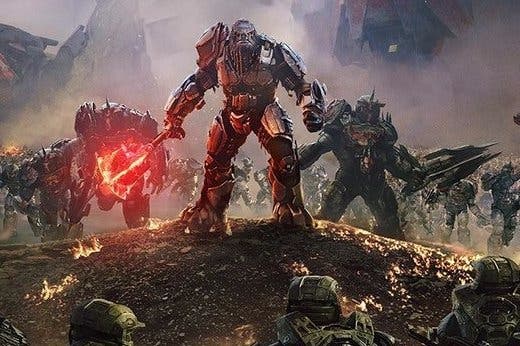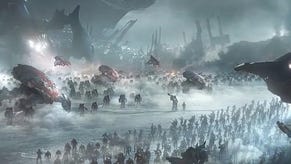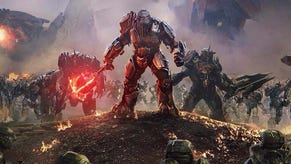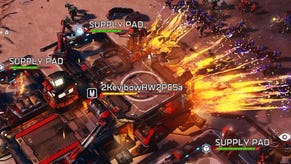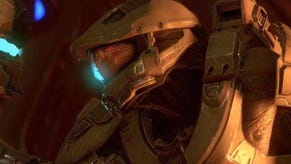Halo Wars 2 feels caught in No Man's Land
The Xbox One beta reveals a game that's struggling to find the balance between change and consolidation.
One of the things I love most about strategy gaming is its breadth, and few comparisons speak to that like the pairing of The Creative Assembly, architect of Total War, and Ensemble, the now-shuttered creator of the original Halo Wars. Total War's real-time battles hinge on the glacial spectacle of formations colliding, subject to a creeping alchemy of terrain conditions and morale. Halo Wars takes a completely different tack, adapted from Ensemble's Age of Empire series: it's fast-paced, abstract, finely poised between base management and combat, and more or less devoid of messy variables such as unit psychology. What could possibly happen when one developer takes over where the other left off? The answer, going by the Xbox One beta, is: nothing all that mind-blowing so far.
Halo Wars 2 is cast firmly in the image of Ensemble's swansong, replicating its miraculously pad-friendly control scheme, streamlined construction elements, wildcard Commander abilities and rock-paper-scissors relationship between infantry, ground vehicles and aircraft. The Creative Assembly has made a number of important - and questionable - changes within those parameters but in broad terms, the beta and Ensemble's game are indistinguishable. There's the same angled top-down perspective, the same fluid radial menus, and the same magic selection reticule that fattens to enclose groups of units when you hold the button.

It's still a formula that seems better suited to mouse and keyboard - and with a PC version of Halo Wars 2 in the offing, the limitations of a controller are more pressing today than in 2008 - but there are once again hotkeys to lessen the pain. You can select all units on screen with right bumper, or hold it to reel in every unit you've built, for those super-scientific counter-offensives when somebody smuggles a bunch of tanks into your territory. The D-pad, meanwhile, allows you to flick instantaneously between bases and hotspots.
If the thinking behind the layout remains sound, the execution could use more time in the oven. Selecting fast-moving units such as Banshees can be tricky, thanks to a sluggish cursor and a shortage of visual or audio feedback, and as for micromanaging the troops in the fray, well - anything beyond focus-firing and the mass unleashing of special abilities with Y button is generally too much bother. The UI has its rough edges, too - you can't see a friendly player's field of view on the mini-map, and units from opposing factions can be difficult to tell apart when they're slopped together.
Bases are once again deployed from orbit onto preset building templates, which gives the designers more control over the play of tactics than in a build-anywhere RTS like Command and Conquer. As regards the beta's spacious Richochet map, at least, much thought has clearly gone into how long it should take a player to ferry reinforcements to an objective, or which angles your forward outposts are most vulnerable from.
Each base consists of a hub that's good for basic units such as Grunts and Marines, surrounded by construction pads for factories and resource generators. There are now two kinds of resource, power and supplies, which can also be harvested from energy pylons and somewhat incongruous piles of crates, sprinkled across the map. This puts more emphasis on the economy than in the original game and, frankly, seems like dead weight, though it's possible that having to prioritise one or the other resource will create worthwhile drama on certain maps, or during longer missions.
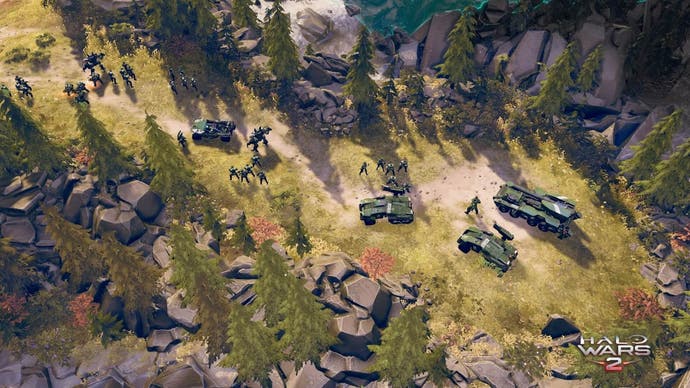
To make room for the additional generator type, The Creative Assembly has also done away with UNSC reactors and Covenant temples. These used to determine your tech level, which dictates the quality of the units you can build, and is now raised by upgrading a base hub. The consequence is that you can't sabotage an opponent by nuking their reactors to stop production of advanced tanks and fliers - a popular gambit in the first game, whose loss is keenly felt.
More positively, the developer has fleshed out the old game's Commander skills along lines plainly suggested by the MOBA. You now earn points for completing objectives that are spent on tide-turning uber abilities such as the infamous Mac Cannon bombardment. Each Commander - there are six, including the grizzled yet boyish Captain Cutter and Atriox, leader of new Covenant faction the Banished - has a different set of abilities, and working out which to unlock or upgrade first sits nicely alongside such quandaries as whether you want an army that's all tanks, or a twitchy raiding force backed up by airborne healers.
The units themselves have been heavily rejigged - among other prominent adjustments, Scorpion tanks are much more fragile and Covenant leaders no longer appear on the map itself, though you can still build powerful heroes such as the inevitable Spartans. There are also fewer unit-specific upgrades, which is disappointing because it makes your squads feel more disposable.
It's a pungent cocktail of the promising and the problematic, all told, but Halo Wars 2's greatest shortcoming right now is simply how it has been introduced. It's not just that the beta build is rife with bugs such as freezing or missing weapon effects - the only currently available mode, Domination, is a bruising experience that allows too little time for The Creative Assembly's alterations to strut their stuff.

As in Battlefield's Conquest mode, the idea here is to capture and defend structures to bleed away the opposing team's tickets. It's an engaging set-up inasmuch as it obliges generals to make snappy decisions about building and research priorities, quit their corners early and risk taking turf with whatever they can scrape together, rather than pulling up the drawbridge and slowly amassing a doomsday army worthy of Genghis Khan. But it's the kind of mode you move onto after a dozen or so rounds of deathmatch or skirmish, once you've got the fundamentals down pat. There's a video tutorial, in fairness, but it's little more than a breakdown of the controls.
I've seldom had a Domination match outlast 15 minutes, and most were decided in the opening third - grab the central flag on Ricochet early while an ally claims the nearest two, and you'll usually rack up an unassailable lead even if you're eventually pushed back. (There's also the option of zerg-rushing the enemy with your starting troops, rather than competing for flags, but this is countered by the fact that each primary base spawns with turrets pre-installed.) It's thus hard to get a feel for Halo Wars 2's endgame right now, with costly bruisers such as UNSC Vulture gunships scarcely in play before one side throws in the towel.
Given the beta's limited scope, I'm tempted to give Halo Wars 2 the benefit of the doubt about how some of the base game's changes will pan out. The Creative Assembly's pedigree speaks for itself, and I'm eager to see what it'll make of the campaign, which continues the story of the UNSC cruiser Spirit of Fire and takes place in and around the Ark, a Forerunner megastructure from Halo 3. Perhaps we'll get to oversee development of the cruiser between missions - making decisions that affect the odds on the ground in a fresh spin on Total War's famous blend of turn-based governance and real-time battling.
It certainly feels like The Creative Assembly needs to bring more of its own skillset to the party, because as things stand, this long-awaited sequel is at once too cautious and too clumsy. With Halo Wars, Ensemble carved out a niche for real-time strategy on console. It's a great foundation to fall back on, but as every seasoned general knows, to win a battle you've got to leave your comfort zone and push out into enemy territory.
